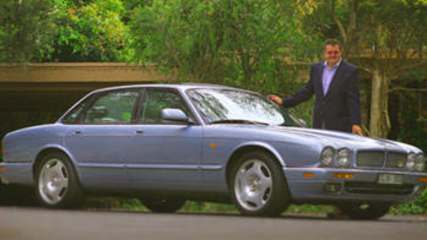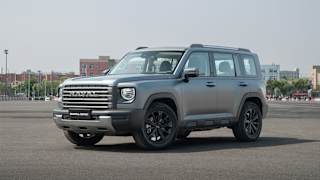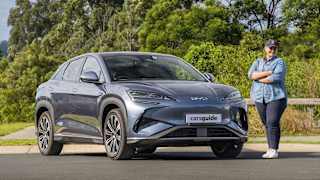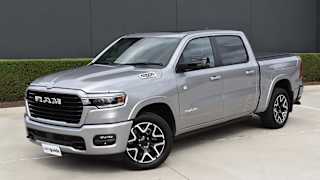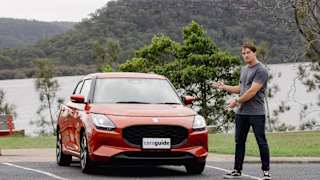Jaguar XJ 2003-2005 Review
By Graham Smith · 01 Feb 2008
The Mark V model of the late 1940s, the Mark VII of the 1950s and the original XJ6 of the late-1960s established a fabulous heritage of elegant saloons, and little has changed in the 60 years since.The company's former slogan, Pace With Grace, pretty much sums up the big Jaguar saloons. They were sporty, but still oozed charm and elegance.Today's models are no less elegant than the classics, even if some think they're stuck in the past. Model watchThe seventh-generation Jaguar XJ saloon emerged in 2003, and again it looked for all the world like a makeover of the first XJ shown in the late 1960s.That first car was such a beauty it seems Jaguar couldn't let it go, but why should it? That original XJ6 was perfectly proportioned, its balanced lines looking fresh even after 40 years.The XJ8 of 2003 had a similar balance despite being significantly larger than the model it replaced. It was longer, wider and taller than its cousin, and had a longer wheelbase and reduced front overhang.If it looked like a throwback to the past, the X350, as it was known, was no such thing once you looked under the skin and saw the depth of engineering that marked this cat out as a very new beast.One constant criticism of the big cats over the years is its exterior size was never translated to interior room.At the core of the XJ was a rivet-bonded aluminium monocoque that slashed the big cat's weight by 200kg or more. Remarkably, it weighed little more than 1500kg.The lightness clearly comes through in the driving. The XJ feels agile and responsive, with quick, sensitive, precise steering that helps belie its physical size.Though Jaguars have always been a pleasure to drive, the dynamics and speed of this model shifted it up into an elite class occupied by the BMW M-Series and Benz AMG models.Under the XJ's long, elegant bonnet at launch was a choice of two V8s, which in early 2004 were joined by a V6.The V8 choices were a 3.5-litre unit and a larger 4.2-litre engine, the latter available in normally aspirated and supercharged forms.Both were of a double overhead camshaft configuration with four valves a cylinder. The 3.5-litre version had 196kW at 6300 revs and 345Nm at 4200 revs. The normally aspirated 4.2-litre engine put out 224kW at 6000 revs and 420Nm at 4100 revs.The big cracker-blown 4.2-litre engine, which powered the awesome XJR, had 298kW at 6100 revs and 553Nm at 3500 revs.All that drive was then transferred to the blacktop through a ZF six-speed automatic, the final drive going through the rear wheels.When it arrived in 2004 the double overhead camshaft 3.0-litre V6 had 179kW at 6800 revs and 300Nm at 4100 revs.With a solid, rigid foundation, the XJ had a stable platform that could support the sort of handling the Jaguar engineers wanted to achieve, but that was just the start.Add to the aluminium masterpiece self-levelling air springs to adjust the ride height to suit the speed the big cat is being driven at, and Jaguar's adaptive shock absorbers, and you have an awesome package.A stiffer, more sporting setup was optional, and there was the XJR for the ultimate ride.Tradition also played a big part in determining the design of the interior, which had lashings of leather, touches of wood and many features such as power seats, adjustable pedals and steering wheel, parking sensors, cruise, air and a super sound system. On the lot Jaguar lost ground to its German rivals when it, along with the entire British car industry, went through a meltdown in the 1970s and '80s, caused by poor build quality and engineering integrity.The old marque doesn't have the respect it once had. Most of its buyers have moved on to BMW or Benz, and newer ones never knew it at its best.For the V6 pay $95,000-$105,000; for the small V8 (2003-2005), $98,000-$120,000; for the bigger V8, $110,000-$130,000.If you want to go all the way to the XJR you'll need to pay $115,000-$140,000. In the shopAverage build quality plagued earlier XJ Jags. The problems were mostly silly things that should never have occurred, but did, and they were very frustrating for owners. But since Ford took over the quality has improved and there is little for owners to be concerned about.Make sure the service schedule has been adhered to and the oil in particular has been changed.Eighteen-inch wheels are standard and 19 and 20-inch wheels optional, so be prepared to pay dearly when tyres need replacing. In a crunchThe XJ has an awesome array of safety features — as there should be on a car that costs about $200,000 when new.The monocoque chassis, its agility, precise steering and powerful brakes give it the roadholding to escape possible crash situations.Should the metal begin to crumple, front and side airbags are activated. At the pumpBeing surprisingly light for its size, the XJ is reasonably economic. If you pedal lightly you can expect to achieve 10.5-12.5 litres for 100km. The bottom lineClassic looks belie a modern sporting saloon that matches the bahn-stormers.70/100 All anglesLook forTimeless classic stylingWonderfully balanced chassisPrecise steeringHigh performance RivalsLexus LS430 (2003-2005): $82,000-$110,000BMW 7-Series (2002-2005): $89,000-$220,000Audi A8 (2003-2005): $85,000-$125,000
